Development of an Energy Harvesting System for the Conversion of Mechanical Energy of Human Movement into Electrical Energy and Its Integration into High Performance Wearable Clothing
Abstract
:1. Introduction
- Thermophysiological comfort relates to the way in which clothing affects heat, moisture, and air transfers as well as the way in which the body interacts with clothing.
- Sensorial or neurophysiological comfort relates to how the user feels when clothing comes into contact with the skin.
- Body movement comfort relates to the ability of clothing to allow free movement, reduce burden, and support the body.
2. Materials and Methods
2.1. Development of an Electromagnetic Energy Converter
- (1)
- The transducer of human motion into electricity, operating on the principle of electromagnetic induction and consisting of four flat inductive elements connected in sequence and magnets moving along them (Figure 3, panel 1).
- (1.1)
- Each inductive element consists of five-layer coils in series (number of turns 50). The inductive elements are connected in such a way that the generated voltage pulses have opposite polarity, and the distance between the coil edges is 0 mm. The inductive elements are positioned so that the side seam of the long-sleeved shirt lies between the inductive elements (Figure 3, panel 1.1).
- (2)
- Module of the generated very low AC voltage conversion to the higher and more usable DC voltage (Figure 3, panel 2).
- (3)
- Module of energy storage, consisting of electrolytic capacitor, (Figure 3, panel 3).
- (4)
- Wireless data transmission module (Figure 3, panel 4).
- (5)
- Microcontroller unit to supervise work of data transmission and measurement modules (Figure 3, panel 5).
- (6)
- Module for measuring physiological and environmental parameters, consisting of temperature and relative humidity sensing units, placed on the inner surface of the shirt next to the induction elements and determining the corresponding parameters in the sub-cloth area (Figure 3, panel 6).
2.2. Nano-Scale Cotton Shirt Modification to Improve Wearer Comfort and Smart Shirt Sustainability
3. Results
3.1. Electromagnetic Energy Converter
- Parts of the converter must be positioned so that they move in relation to each other along with the corresponding parts of the clothing during its movement (Figure 4);
- The surfaces with EMC parts should move along each other as closely as possible;
- The location of the inductive elements should be as flat as possible and should not be subjected to deformation during movement;
- The parts of the converter must not alter the characteristics of the garment and its appearance;
- It is desirable to provide the maximum speed of magnet movement along inductive elements because the amount of energy generated is directly proportional to the energy of the magnet movement.
3.2. Nano-Scale Cotton Shirt Modification to Improve Wearer Comfort and Smart Shirt Sustainability
4. Discussion
5. Conclusions
Author Contributions
Funding
Institutional Review Board Statement
Informed Consent Statement
Data Availability Statement
Conflicts of Interest
References
- Singha, K.; Kumar, J.; Pandit, P. Recent Advancements in Wearable & Smart Textiles: An Overview. Mater. Today Proc. 2019, 16, 1518–1523. [Google Scholar]
- Okss, A.; Kataševs, A. Textile Transducer Device (TTD) for Strain and Pressure Measurements, System of TTD Used for Skin and Muscle Control and Stimulation, and Method of TTD Production from Conductive Piezoresistive Yarn Using Tuft or Terry Weaving or Knitting. Patent LV 14920 B, 2015. Available online: https://databases.lrpv.gov.lv/patents/P-14-58 (accessed on 15 October 2023).
- CEN/TR 16298:2011; Textiles and Textile Products—Smart Textiles—Defnitions, Categorization, Application and Standardization Needs. iTeh, Inc.: Newark, DE, USA, 2011.
- Stygiene, L.; Varnaite-Zuravliova, S.; Abraitienė, A.; Padleckiene, I.; Krauledas, S. Investigation of Textile Heating Element in Simulated Wearing Conditions. Autex Res. J. 2020, 21, 207–215. [Google Scholar] [CrossRef]
- Hou, Z.; Liu, X.; Tian, M.; Zhang, X.; Qu, L.; Fan, T.; Miao, J. Smart fibers and textiles for emerging clothe-based wearable electronics: Materials, fabrications, and applications. J. Mater. Chem. A 2023, 11, 17336–17372. [Google Scholar] [CrossRef]
- Jeong, K.S.; Yoo, S.K. Electro-Textile Interfaces: Textile-Based Sensors and Actuators. In Smart Clothing—Technology and Applications—Human Factors and Ergonomics; Cho, G., Ed.; CRC Press: Boca Raton, FL, USA, 2010; pp. 89–114. [Google Scholar]
- McKnight, M.; Agcayazi, T.; Ghosh, T.; Bozkurt, A. Chapter 8—Fiber-Based Sensors: Enabling Next-Generation Ubiquitous Textile Systems. In Wearable Technology in Medicine and Health Care; Raymond, K.-Y.T., Ed.; Academic Press: Cambridge, MA, USA, 2018; pp. 153–171. ISBN 9780128118108. [Google Scholar]
- Vagott, J.; Parachuru, R. An Overview of Recent Developments in the Field of Wearable Smart Textiles. J. Textile Sci. Eng. 2018, 8, 4. [Google Scholar] [CrossRef]
- Kang, D.; Rongzhou, L.; Lu, Y.; John, S.; Ho, J.W.; Chwee, T.L. Electronic textiles for energy, sensing, and communication. iScience 2022, 25, 104174, ISSN 2589-004. [Google Scholar]
- Jatoi, A.S.; Khan, F.S.A.; Mazari, S.A.; Mubarak, N.M.; Abro, R.; Ahmed, J.; Ahmed, M.; Baloch, H.; Sabzoi, N. Current applications of smart nanotextiles and future trends. In Nanosensors and Nanodevices for Smart Multifunctional Textiles; Elsevier: Amsterdam, The Netherlands, 2021; Chapter 19, pp. 343–365. [Google Scholar]
- Nagamine, K.; Sekine, T.; Tokito, S. Printed Electronics-Enabled Wearable/Portable Physical and Chemical Sensors for Personal Digital Healthcare. In Encyclopedia of Sensors and Biosensors, 1st ed.; Narayan, R., Ed.; Elsevier: Amsterdam, The Netherlands, 2023; pp. 68–79. ISBN 9780128225493. [Google Scholar]
- Terļecka, G. Integration of Human Motion Energy Converter into Clothing. Ph.D. Thesis, Riga Technical University, Riga, Latvia, 2019. [Google Scholar]
- Grabham, N.J.; Li, Y.; Clare, L.R.; Stark, B.H.; Beeby, S.P. Fabrication Techniques for Manufacturing Flexible Coils on Textiles for Inductive Power Transfer. IEEE Sens. J. 2018, 18, 2599–2606. [Google Scholar] [CrossRef]
- Gurova, O.; Merritt, T.; Papachristos, L.; Vajakaari, J. Sustainable Solutions for Wearable Technologies: Mapping the Product Development Lifecycle. Sustainability 2020, 12, 8444. [Google Scholar] [CrossRef]
- McCann, J. Identification of design requirements for smart clothes and wearable technology. In Smart Clothes and Wearable Technology, 2nd ed.; The Textile Institute Book Series; Woodhead Publishing: Sawston, UK, 2023; pp. 327–369. [Google Scholar]
- Morais, D.S.; Guedes, R.M.; Lopes, M.A. Review: Antimicrobial Approaches for Textiles: From Research to Market. Materials 2016, 9, 498. [Google Scholar] [CrossRef] [PubMed]
- Moellebjerg, A.; Palmén, L.; Gori, K.; Meyer, R. The Bacterial Life Cycle in Textiles is Governed by Fiber Hydrophobicity. Microbiol. Spectr. 2021, 9, e0118521. [Google Scholar] [CrossRef] [PubMed]
- Vihodceva, S.; Kukle, S.; Bitenieks, J. Durable Hydrophobic Sol-Gel Finishing for Textiles. IOP Conf. Ser. Mater. Sci. Eng. 2015, 77, 012023. [Google Scholar] [CrossRef]
- Schubert, U. Chemistry and Fundamentals of the Sol–Gel Process. In The Sol–Gel Handbook: Synthesis, Characterization, and Applications, Levy D., Zayat, M., Eds., 1st ed.; Wiley-VCH Verlag GmbH & Co. KgaA: Weinheim, Germany, 2015. [Google Scholar]
- ISO 9237:1995; Textiles—Determination of the Permeability of Fabrics to Air. ISO: Geneva, Switzerland, 1995. Available online: https://www.iso.org/standard/16869.html (accessed on 15 October 2023).
- ISO 11092:2014; Textiles—Physiological Effects—Measurement of Thermal and Water-Vapour Resistance under Steady-State Conditions (Sweating Guarded-Hotplate Test). ISO: Geneva, Switzerland, 2014. Available online: https://www.iso.org/standard/65962.html (accessed on 15 October 2023).
- Shah, M.A.; Pirzada, B.M.; Price, G.; Shibiru, A.L.; Qurashi, A. Applications of nanotechnology in smart textile industry: A critical review. J. Adv. Res. 2022, 38, 55–75. [Google Scholar] [CrossRef] [PubMed]
- Periyasamy, A.P.; Venkataraman, M.; Kremenakova, D.; Militky, J.; Zhou, Y. Progress in Sol-Gel Technology for the Coatings of Fabrics. Materials 2020, 13, 1838. [Google Scholar] [CrossRef] [PubMed]
- Baķe, I.; Kukle, S.; Beļakova, D. Surface Characteristics of Sol-Gel Treated Single Jersey Plated Socks. J. Eng. Fibers Fabr. 2021, 16, 1–9. [Google Scholar] [CrossRef]
- Larkin, P. Infrared and Raman Spectroscopy Principles and Spectral Interpretation; Elsevier: Amsterdam, The Netherlands, 2017; ISBN 978-0-12-386984-5. [Google Scholar]
- Yang, G.; Song, J.; Hou, X. Fabrication of highly hydrophobic two-component thermosetting polyurethane surfaces with silica nanoparticles. Appl. Surf. Sci. 2018, 439, 772–779. [Google Scholar] [CrossRef]
- Saputra, R.E.; Astuti, Y.; Darmawan, A. Hydrophobicity of silica thin films: The deconvolution and interpretation by Fourier-transform infrared spectroscopy. Spectrochim. Acta Part A Mol. Biomol. Spectrosc. 2018, 199, 12–20. [Google Scholar] [CrossRef]
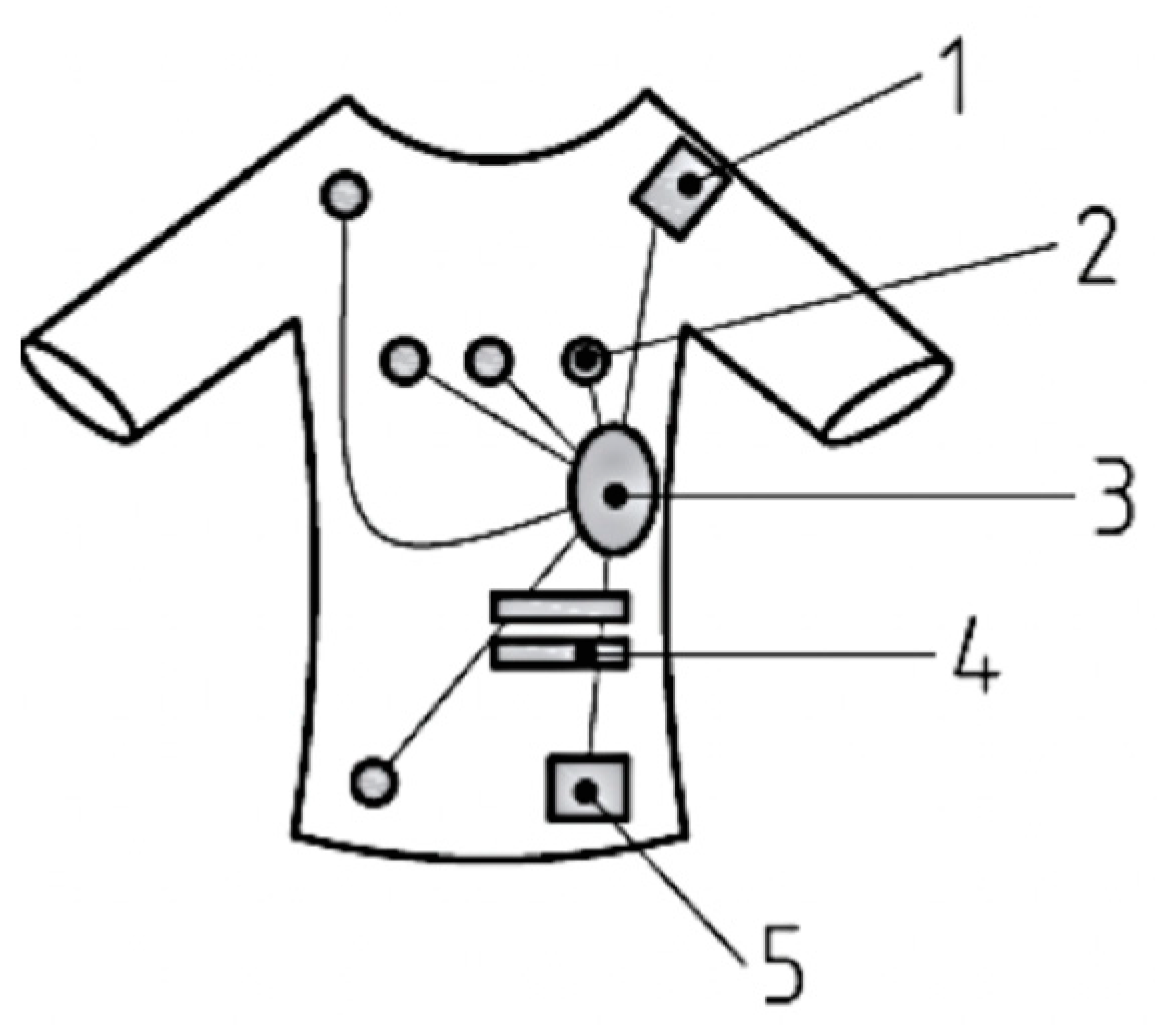
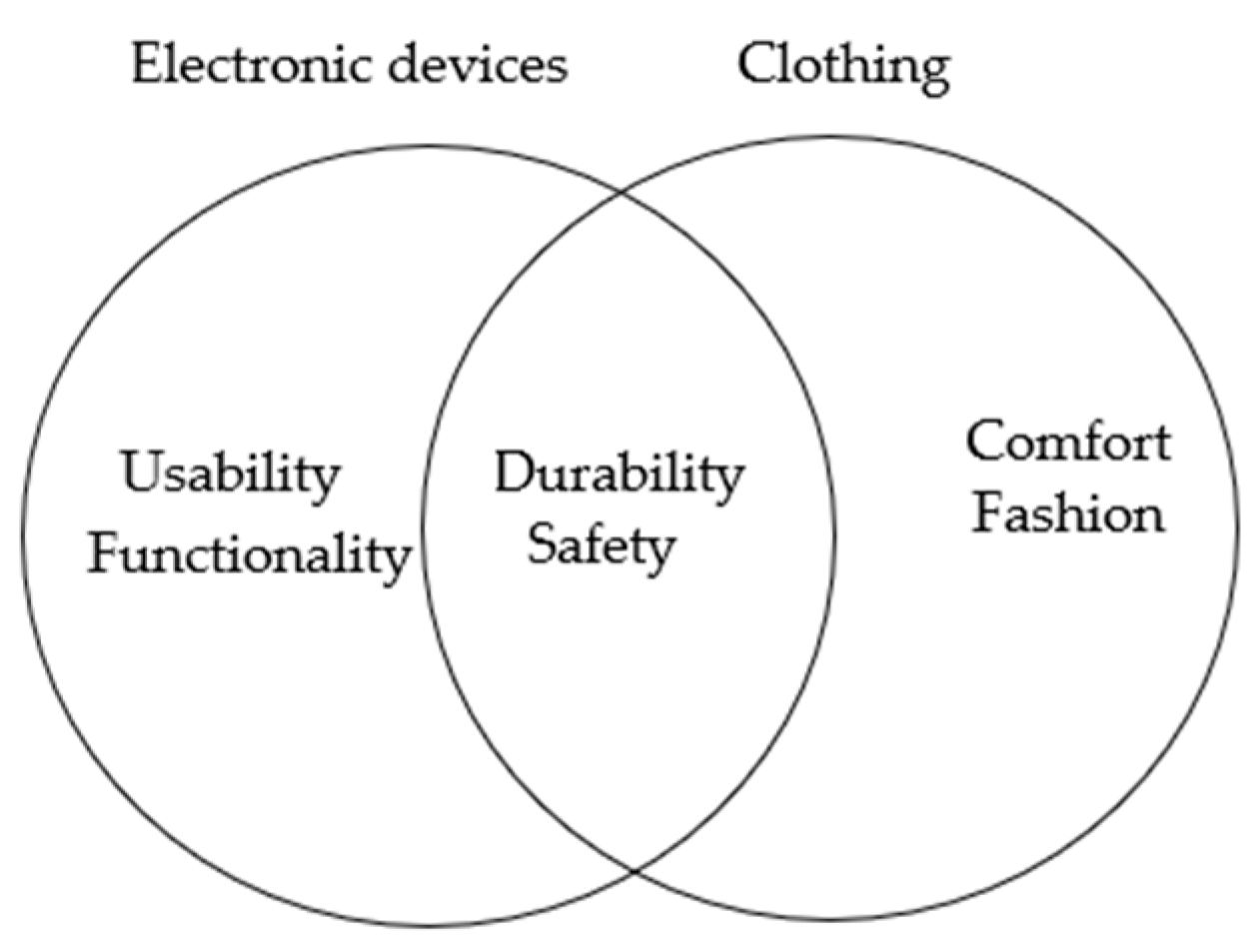
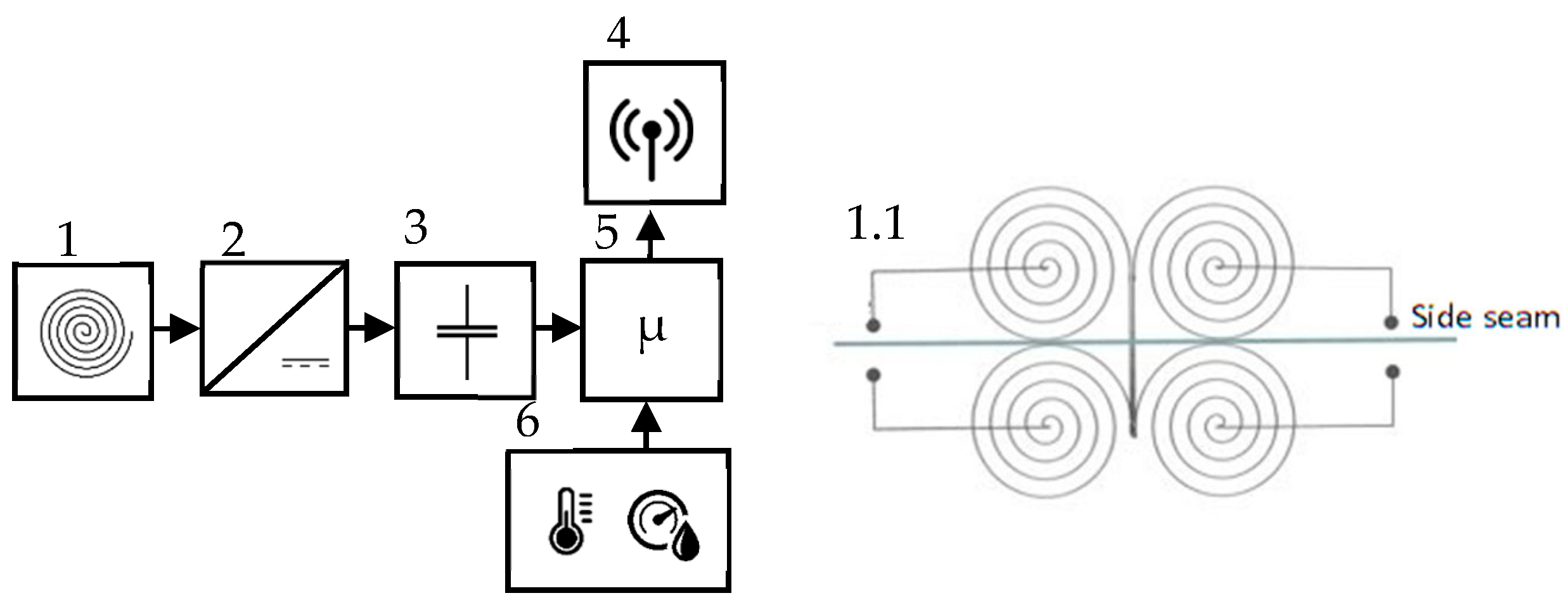

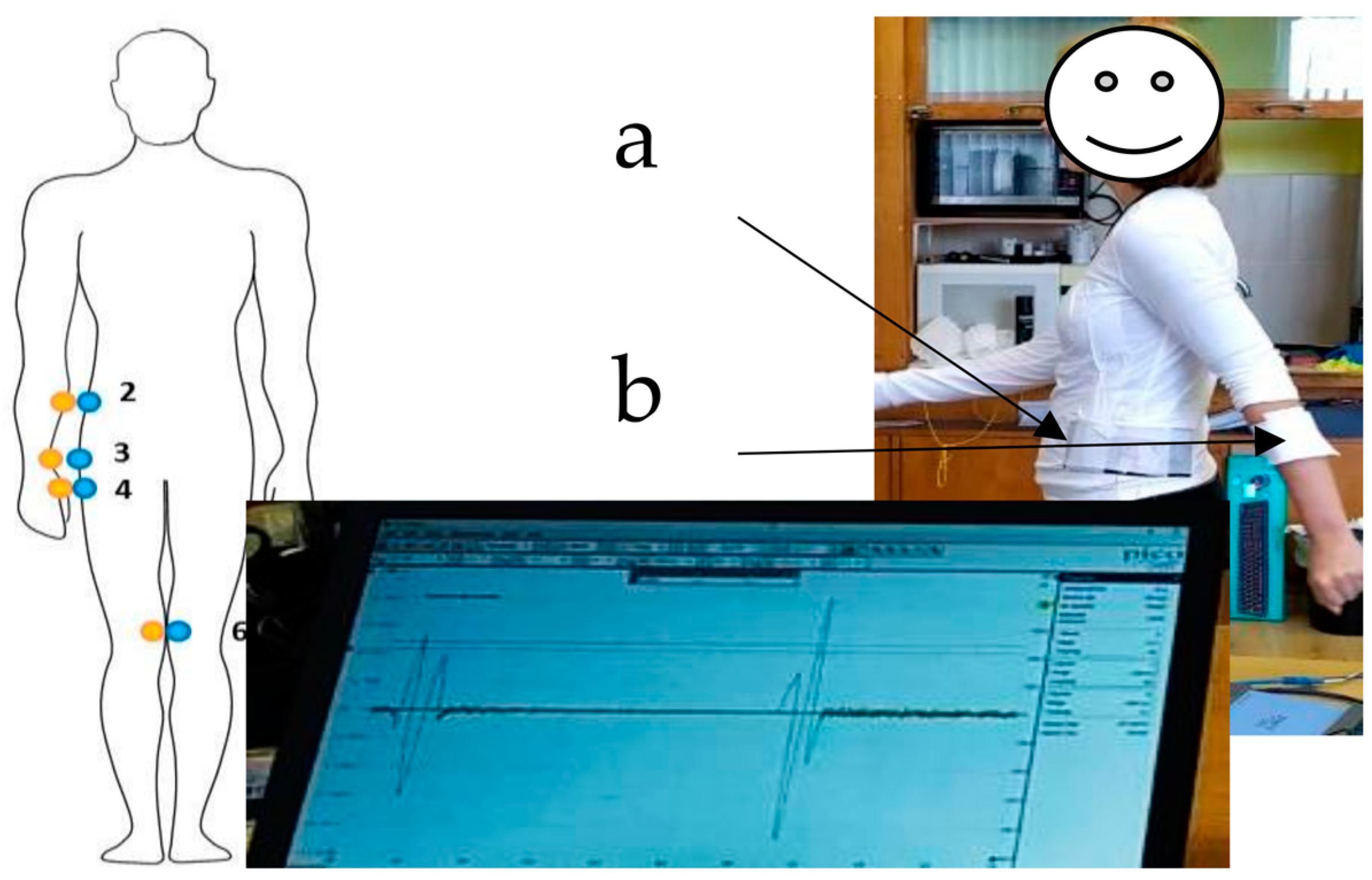

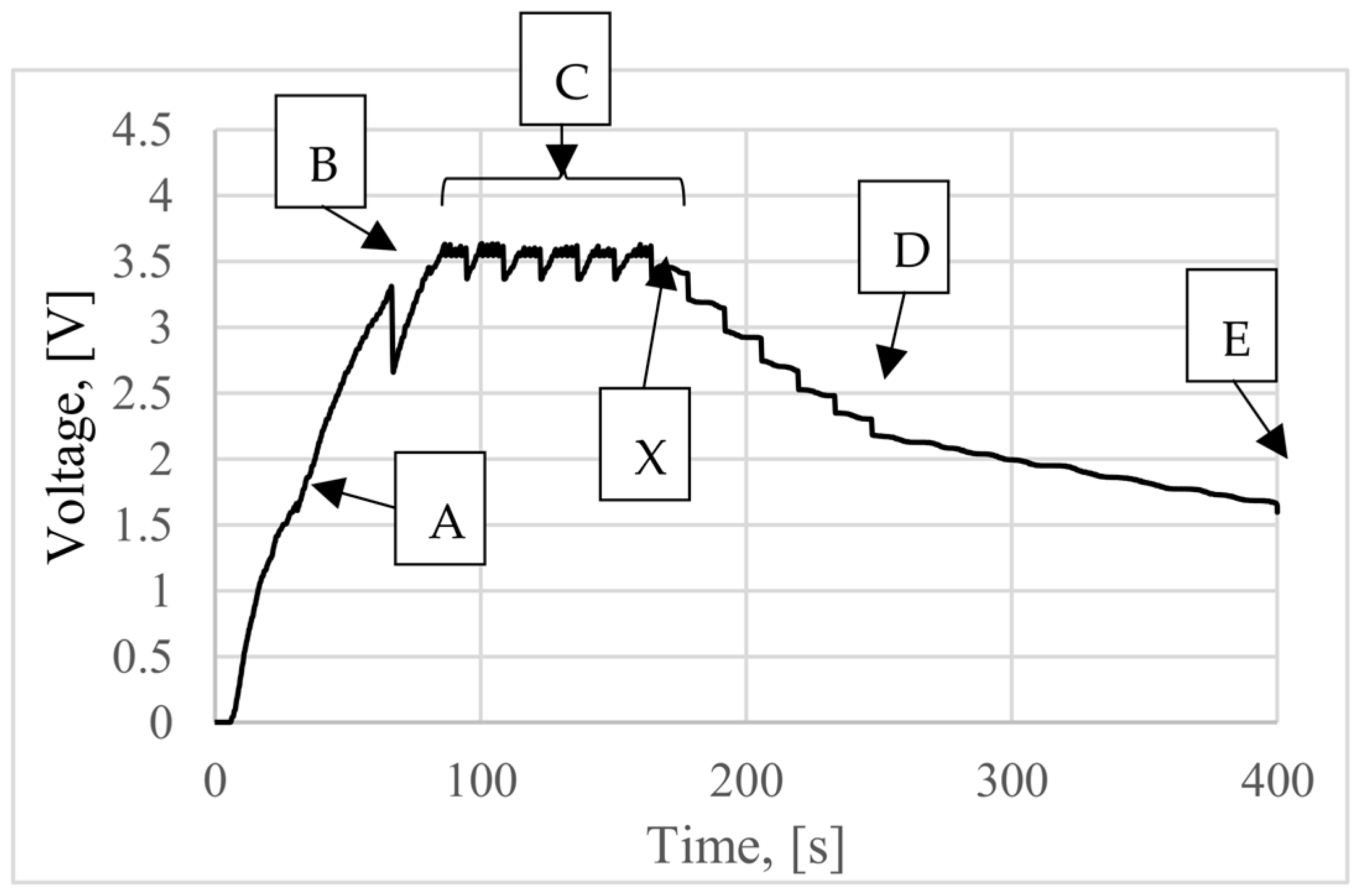
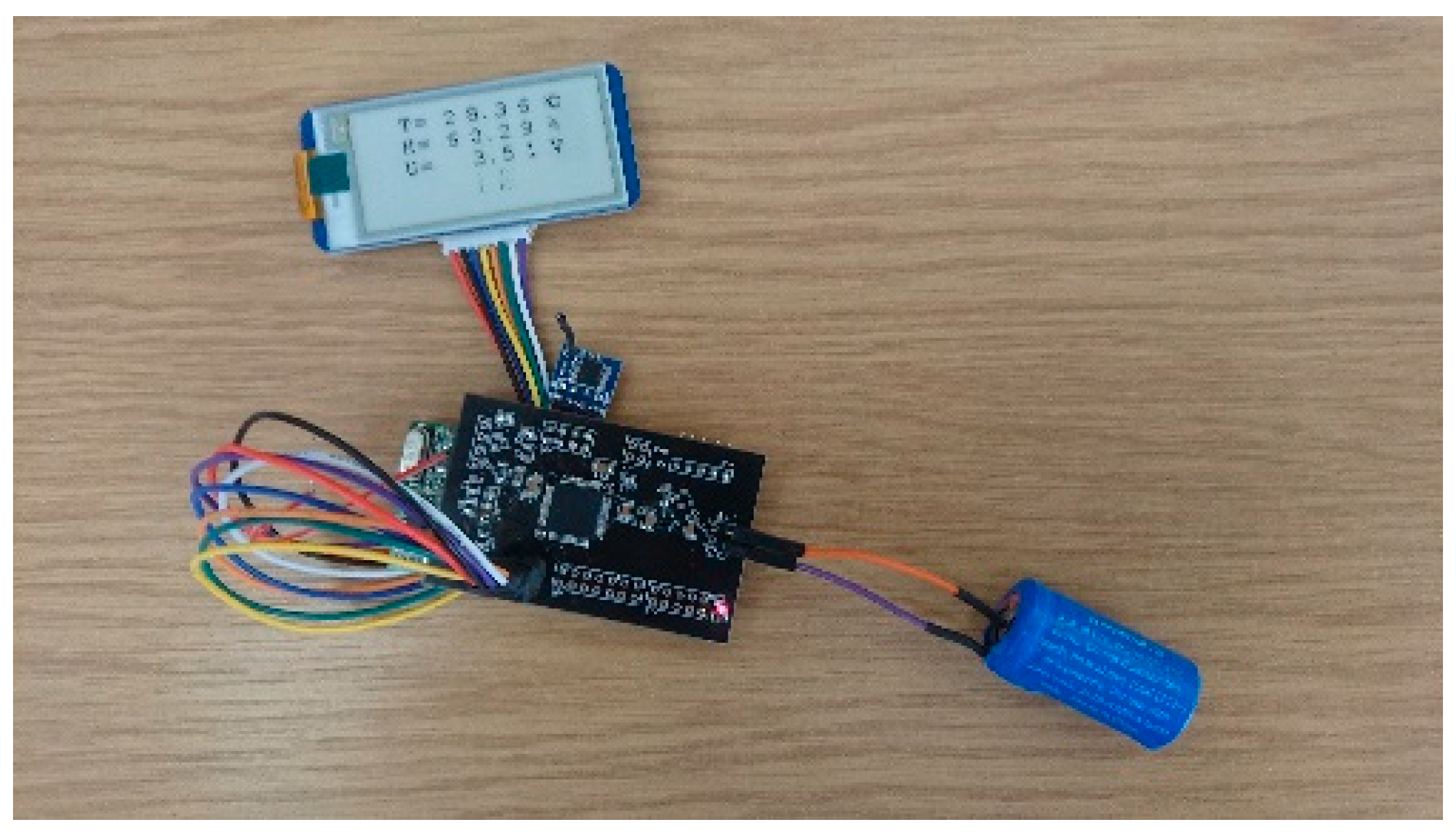
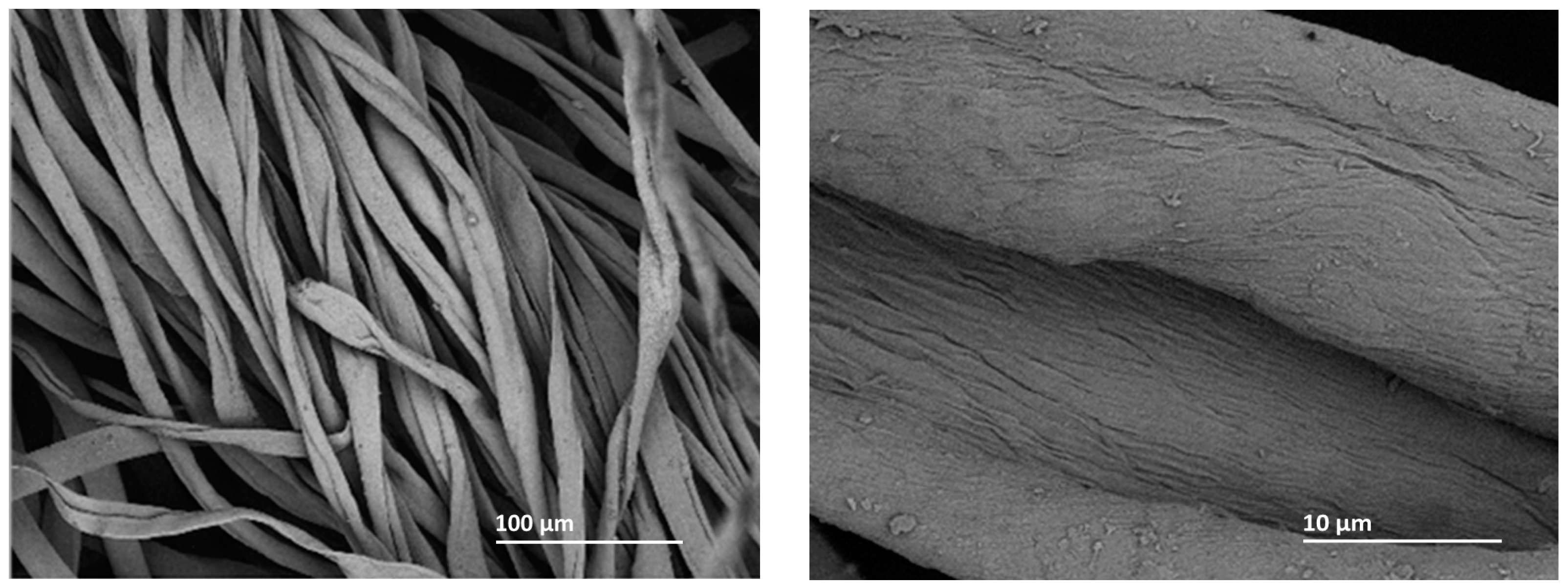
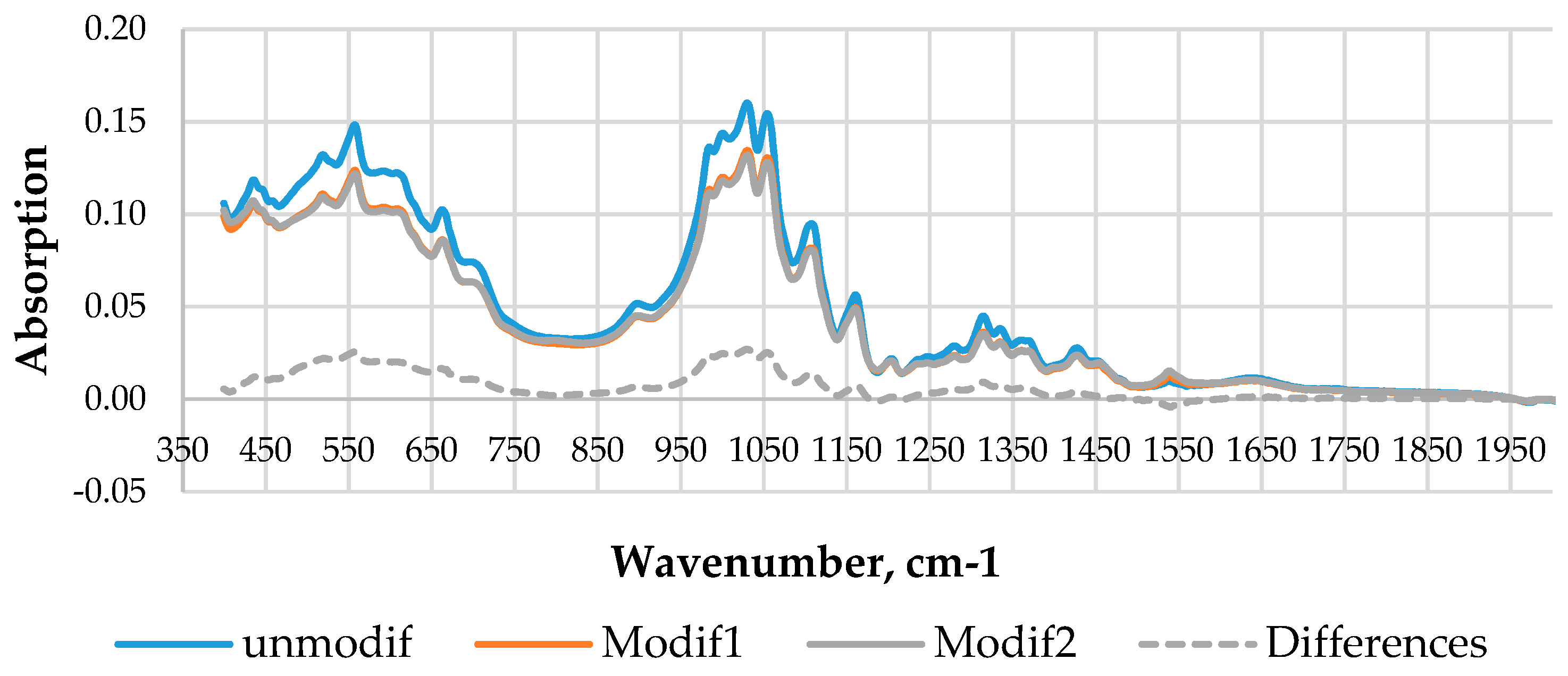
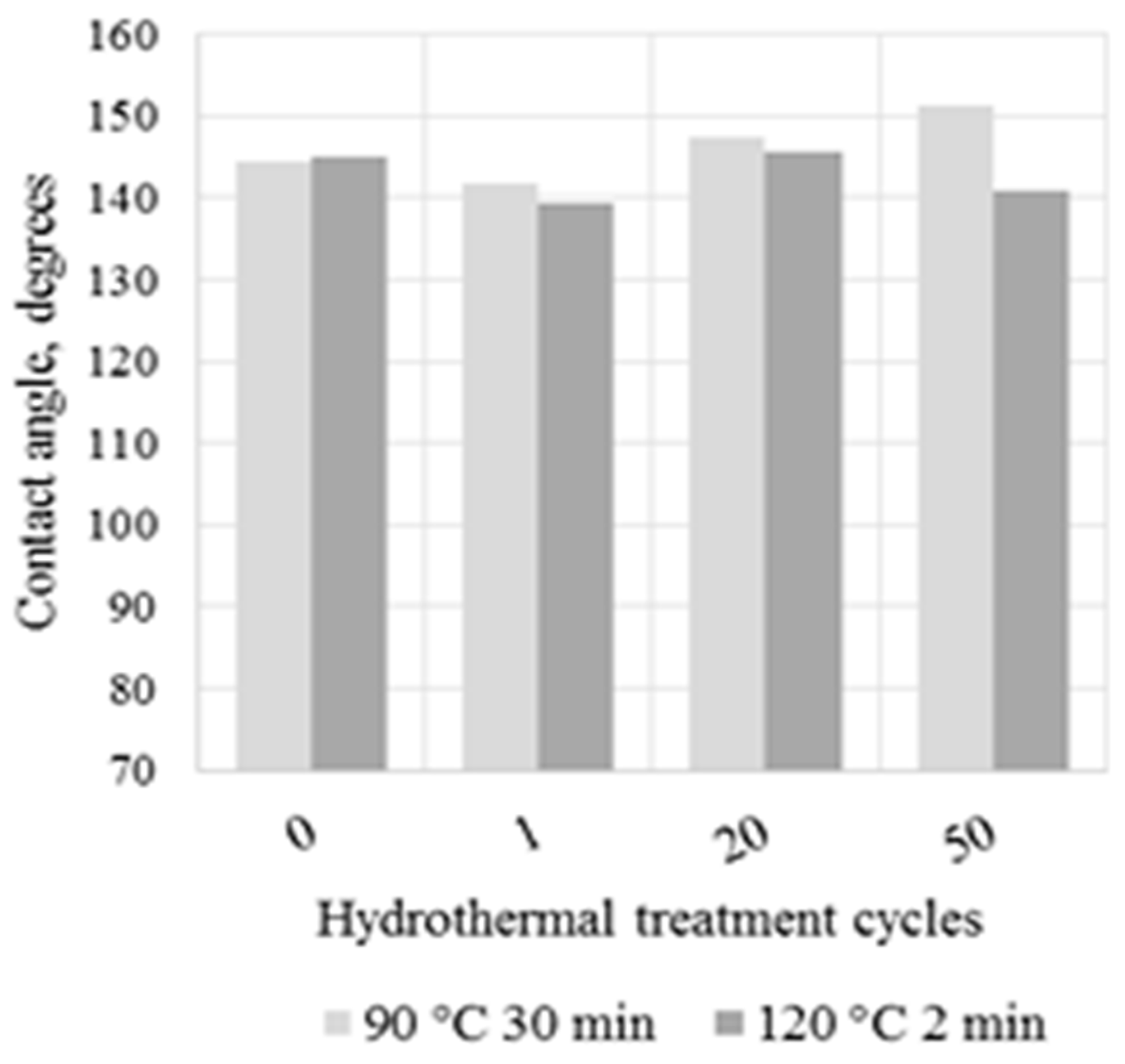
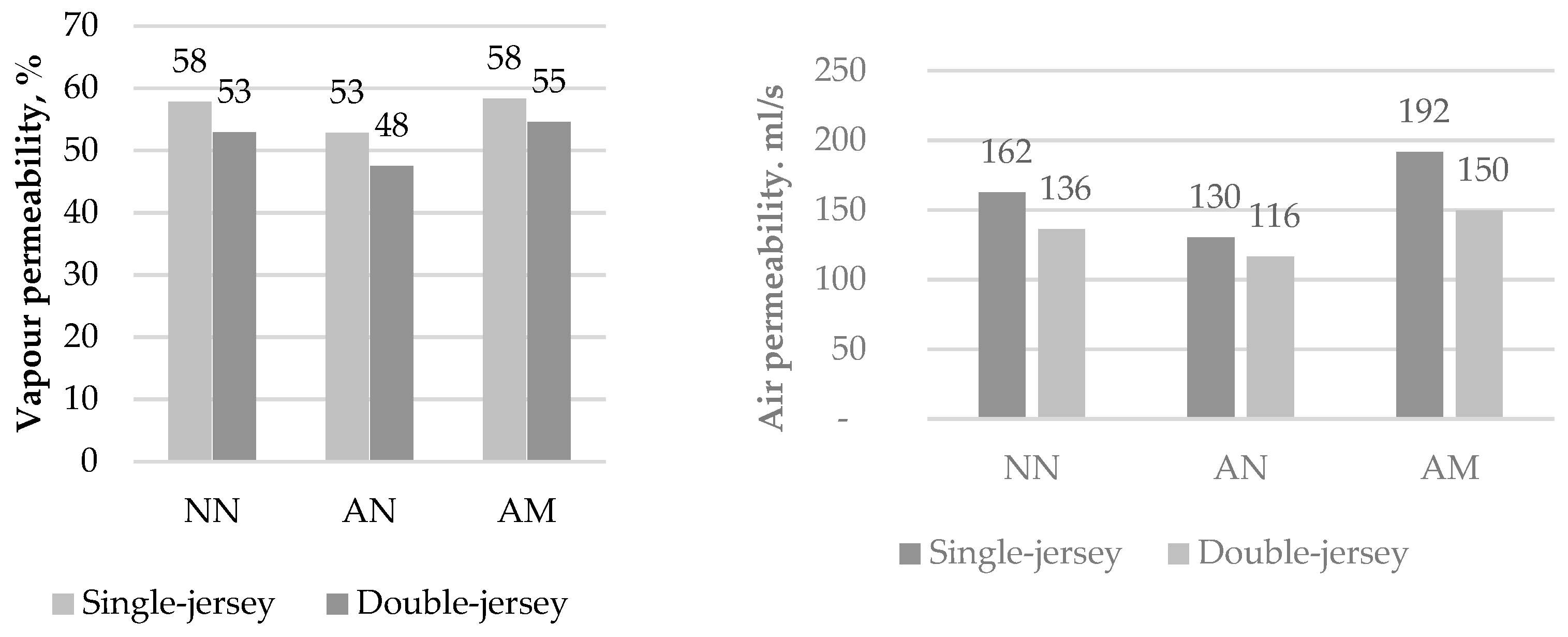
| Nr. | Action | Energy Usage |
|---|---|---|
| 1 | Microcontroller initialization | 0.3 mJ |
| 2 | Transmitter initialization | 2.8 mJ |
| 3 | Measurement and data transmission | 0.4 mJ |
Disclaimer/Publisher’s Note: The statements, opinions and data contained in all publications are solely those of the individual author(s) and contributor(s) and not of MDPI and/or the editor(s). MDPI and/or the editor(s) disclaim responsibility for any injury to people or property resulting from any ideas, methods, instructions or products referred to in the content. |
© 2023 by the authors. Licensee MDPI, Basel, Switzerland. This article is an open access article distributed under the terms and conditions of the Creative Commons Attribution (CC BY) license (https://creativecommons.org/licenses/by/4.0/).
Share and Cite
Kukle, S.; Blūms, J.; Kataševs, A.; Baķe, I.; Jurķāns, V.; Gorņevs, I.; Terļecka, G.; Zelča, Z.; Okss, A. Development of an Energy Harvesting System for the Conversion of Mechanical Energy of Human Movement into Electrical Energy and Its Integration into High Performance Wearable Clothing. Processes 2023, 11, 3056. https://doi.org/10.3390/pr11113056
Kukle S, Blūms J, Kataševs A, Baķe I, Jurķāns V, Gorņevs I, Terļecka G, Zelča Z, Okss A. Development of an Energy Harvesting System for the Conversion of Mechanical Energy of Human Movement into Electrical Energy and Its Integration into High Performance Wearable Clothing. Processes. 2023; 11(11):3056. https://doi.org/10.3390/pr11113056
Chicago/Turabian StyleKukle, Silvija, Juris Blūms, Aleksejs Kataševs, Ieva Baķe, Vilnis Jurķāns, Ilgvars Gorņevs, Gaļina Terļecka, Zane Zelča, and Aleksandrs Okss. 2023. "Development of an Energy Harvesting System for the Conversion of Mechanical Energy of Human Movement into Electrical Energy and Its Integration into High Performance Wearable Clothing" Processes 11, no. 11: 3056. https://doi.org/10.3390/pr11113056
APA StyleKukle, S., Blūms, J., Kataševs, A., Baķe, I., Jurķāns, V., Gorņevs, I., Terļecka, G., Zelča, Z., & Okss, A. (2023). Development of an Energy Harvesting System for the Conversion of Mechanical Energy of Human Movement into Electrical Energy and Its Integration into High Performance Wearable Clothing. Processes, 11(11), 3056. https://doi.org/10.3390/pr11113056






